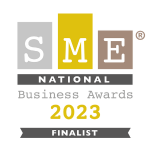SALES & MARKETING
How to Create the Perfect Newsletter
How to create the perfect newsletter
From experience, we know that there are a lot of newsletters out there that are boring, irrelevant, and often crammed with too much information. A newsletter for a small business can be a valuable tool in engaging with your audience but it’s even more important for that email to be fun, valuable, and actually something your subscribers want to read.
So, what goes into creating a newsletter that will be opened?
Urgency
Your newsletter needs to scream “READ ME FIRST”, not just “read me at some point”. This is why the subject line is so important. It’s beneficial to keep your subject line short and to the point. Yes, we know you could write a haiku to your audience but do people really have time for that? As a good rule of thumb, keep the subject line to less than 50 characters.
Making the subject line a ‘call to action’ can work for some businesses. Try using verbs as this helps create the sense of urgency and excitement. You need to ensure that once the subscriber clicks into the email, the call to action is clear. Whether it’s simply to click through to see a blog post or just to forward the email to a friend, make it super simple for your subscribers to know what you want them to do.
Personalise, Personalise, Personalise
Shall I say it once more? Personalise.
The best way you can provide value to your email recipients is by knowing them... even if that’s just a little bit. You can do this by segmenting your audience and sending relevant and personalised content to each segment.
For example, an estate agent may segment their newsletter by which postcode their renters are looking in and therefore only send them specific properties in that area. On a much smaller basis, you can use peoples’ names, mention previous purchases, or offer a personalised incentive.
It's not all about the sale
Well, not 100% of the time. Unless you have some super exciting, big news about the company, product or service, leave out the promotion. We’re not saying they don’t love you - they probably do - but there’s only so much selling you can do before your readers tune out. Instead, send your subscribers educational, relevant, and up-to-date information.
For example, I have an ever-growing collection of gin(!). I willingly signed up to one brand’s mailing list, and every day I would receive an email telling me to BUY, BUY, BUY. However, if they had sent me information about local events they were attending or how best to pair their gin then it’s more than likely I would still be on their subscriber list... and have a bottle of theirs on my shelf.
Consistency is key
Newsletters have gained a bad reputation for ‘spamming’ inboxes, so you need to be careful about the regularity of your newsletter. On the other hand, you don’t want to send it infrequently and have it go missing off the face of the earth for long periods. You need to find a middle ground that will make your newsletter feel like a consistent feature in your subscriber's inbox.
Before you decide how often to send a newsletter, consider:
- How frequently are you creating new content that you want to share?
- Is there any big news to report?
- Do you have a theme for every newsletter you send? If yes, does all your content fit according to the theme?
Make it easy to unsubscribe
This may sound counter-intuitive, and we know it’s painful to see people unsubscribing, but it’s more beneficial than you may think. The unsubscribe link allows users to cancel their subscription when they don’t want any more emails. If you want to maintain an engaged and active subscriber list, then you need to make sure your ‘unsubscribe’ link is clear and easy to find. Plus, if your contacts can’t find the unsubscribe link, they may just mark you as spam and we certainly don’t want that.
You also need to ensure you remain GDPR compliant with your sign-ups and opt-outs.
Make sure you don’t bash out email newsletters with no thought or just because you think you must. Make your newsletter more informative and fun, rather than salesy. You could also take a peep at how other companies are doing it, sign up to newsletters from different businesses in (and out) of your industry and take inspiration from them too.
You can see how we do it by joining our mailing list here!







